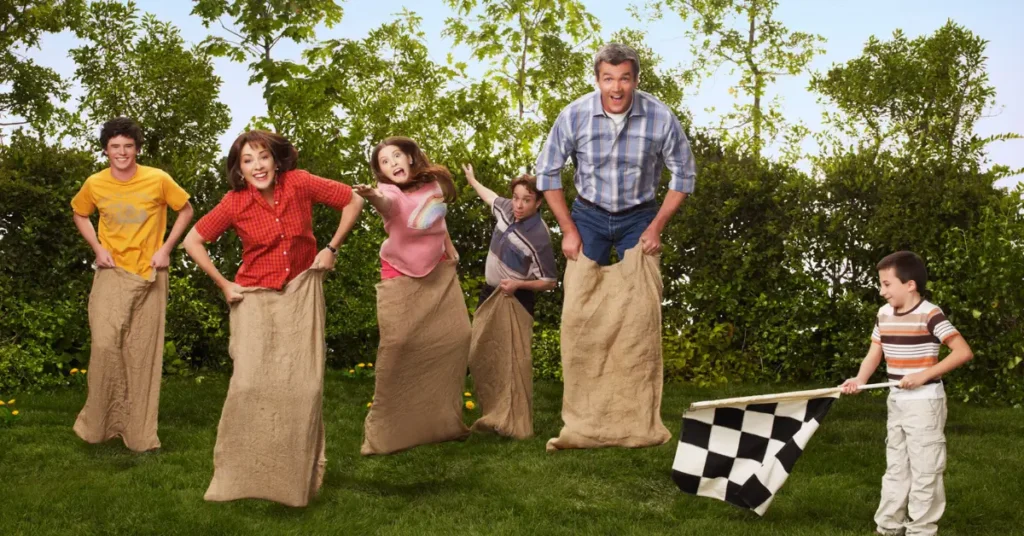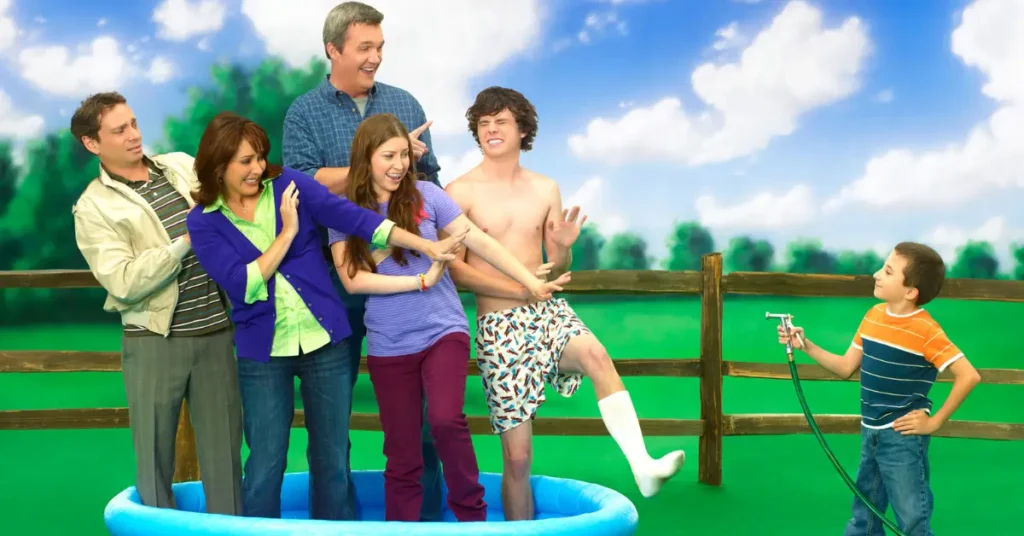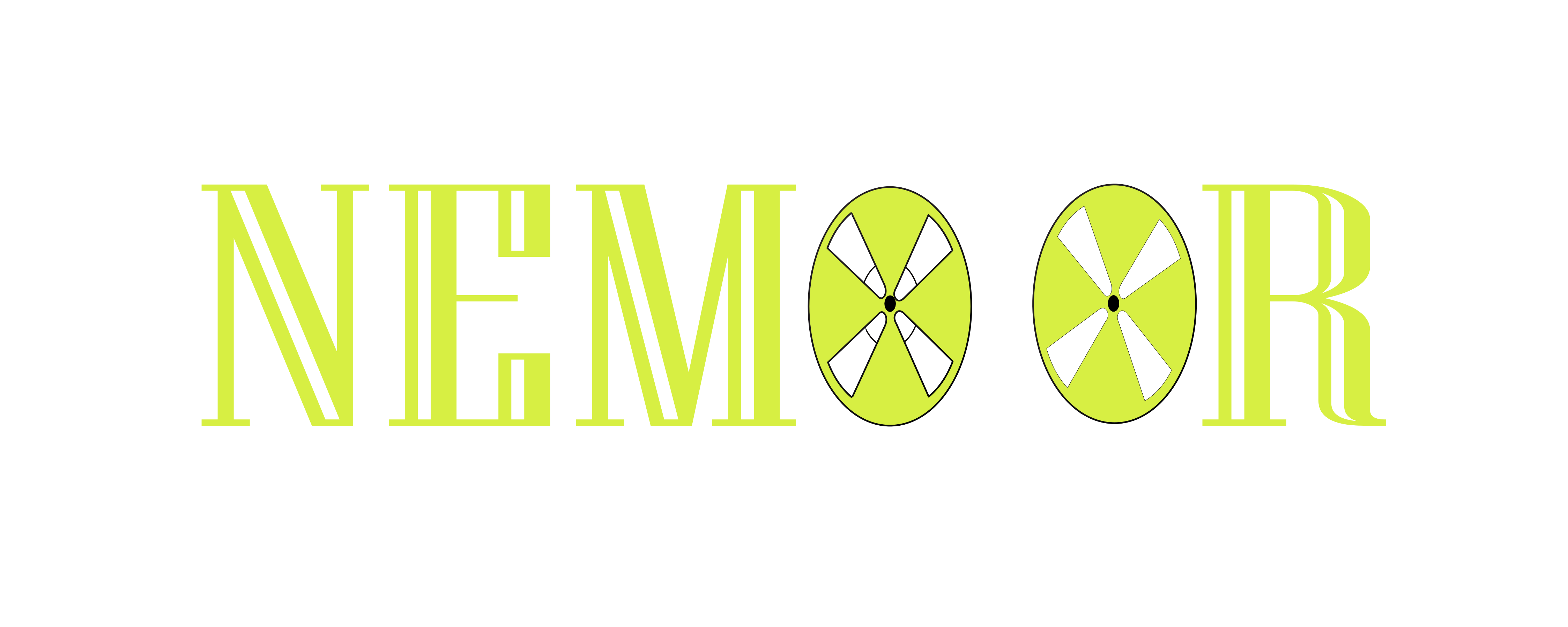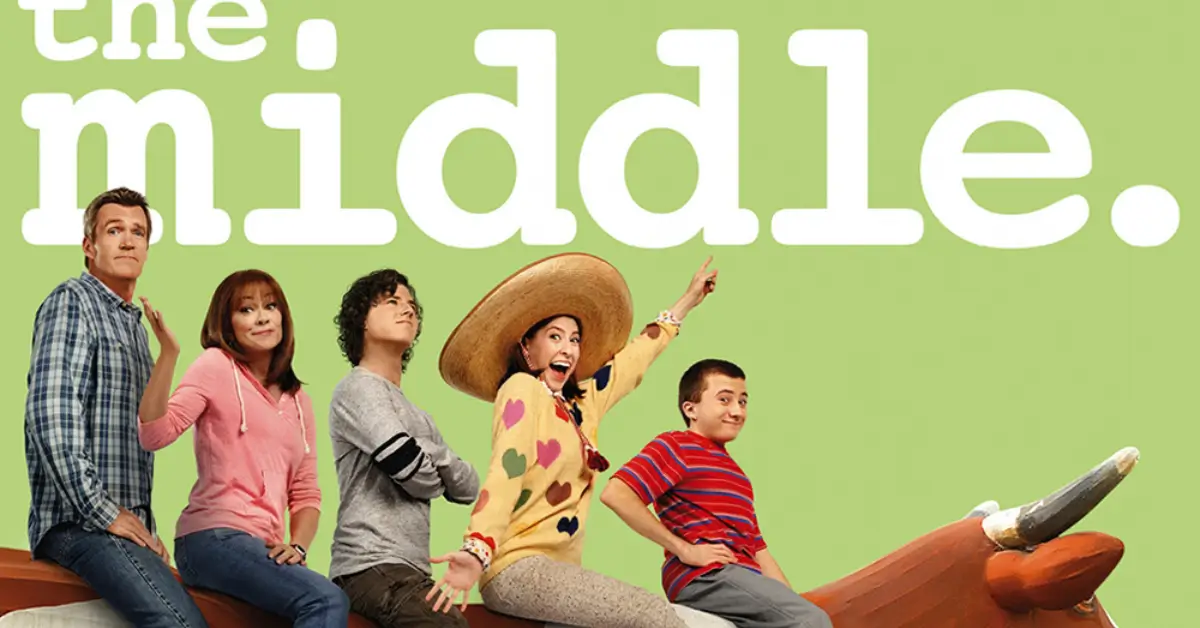Everyday Resilience: Mental Health Themes in ‘The Middle’
In the landscape of family sitcoms, The Middle stands out for its refreshingly authentic portrayal of middle-class American life. Beyond its humor and heart lies a surprisingly nuanced exploration of everyday mental health challenges that resonates with audiences precisely because of its ordinariness. Unlike shows that dramatize clinical diagnoses or extreme situations, The Middle examines the psychological dimensions of typical family life financial stress, parenting anxieties, social struggles, and identity formation with both comedy and compassion.
Thank you for reading this post, don't forget to subscribe!Basic Series Information
Title: The Middle
Run Years: 2009-2018 (9 seasons)
Creators: Eileen Heisler and DeAnn Heline (Previously writers on “Roseanne,” known for authentic portrayals of working-class families)
Main Cast & Characters:
- Patricia Heaton (Frankie Heck) – Overworked mother managing chronic stress and occasional burnout
- Neil Flynn (Mike Heck) – Emotionally reserved father with stoic coping mechanisms
- Charlie McDermott (Axl Heck) – Eldest son navigating adolescent identity and transition to adulthood
- Eden Sher (Sue Heck) – Middle child with remarkable resilience despite constant setbacks
- Atticus Shaffer (Brick Heck) – Youngest son with neurodivergent traits including social challenges
Genre: Family sitcom with dramatic elements
Awards: Critics’ Choice Television Award nomination for Eden Sher; Humanitas Prize nomination
Rating: TV-PG (Suitable for most audiences)
Series Overview
General Summary:
The Middle chronicles the lives of the Heck family in the fictional small town of Orson, Indiana. Frankie and Mike Heck work tirelessly to raise their three distinctly different children while dealing with career frustrations, financial constraints, and the everyday challenges of middle-class American life. The series stands out for its refusal to glamorize or dramatize these struggles, instead finding humor and humanity in the family’s persistent resilience.
Mental Health Themes:
Throughout its nine seasons, the series naturally explores numerous psychological dimensions:
- Chronic stress and burnout in parenting roles
- Economic anxiety and its impact on family dynamics
- Social anxiety and belonging concerns
- Neurodivergent traits and acceptance
- Resilience development through repeated setbacks
- Identity formation during adolescence and young adulthood
- Emotional regulation and expression differences
- Work-life balance challenges
- Perfectionism and its psychological costs
Key Episodes Highlighting Mental Health:
- “The Award” (S3E18) – Frankie’s burnout and need for recognition
- “The Telling” (S4E24) – Brick’s social challenges and diagnostic questions
- “Worry Duty” (S7E17) – Exploration of parental anxiety and letting go
- “The Graduate” (S8E22) – Sue’s resilience and positive psychology
- “A Heck of a Ride” (Series Finale) – Family transitions and emotional growth
Narrative Approaches:
Rather than presenting “very special episodes” about mental health, The Middle integrates psychological themes organically into its storytelling. Mental health isn’t segregated from everyday life but presented as an inherent aspect of human experience. The series employs both overt humor and subtle poignancy to examine how ordinary people navigate psychological challenges without clinical intervention.

Setting & Cinematic Techniques
Visual Environment:
The Heck home cluttered, imperfect, and lived-in visually represents the psychological reality of a family balancing multiple priorities with limited resources. The fictional town of Orson, Indiana serves as a backdrop that amplifies themes of belonging, community expectations, and limited opportunities.
Cinematography:
The series employs visual techniques that enhance psychological themes:
- Medium shots capturing family interactions in cramped spaces
- Visual comedy reflecting internal states (Sue’s braces as external manifestation of awkward adolescence)
- Contrast between aspirational spaces (department stores, neighbors’ homes) and the Hecks’ reality
- Visual consistency creating comfort through familiarity
Sound Design:
The show uses various audio elements to support psychological dimensions:
- Voice-over narration by Frankie revealing inner thoughts and anxieties
- Theme music conveying both struggle and optimism
- Silence highlighting emotional moments amid typical sitcom pacing
Acting & Character Portrayal
Performance Highlights:
The cast delivers nuanced portrayals of everyday psychological states:
- Patricia Heaton embodies Frankie’s perpetual state of overwhelm without caricature
- Eden Sher’s Sue demonstrates remarkable psychological resilience through physical comedy and emotional authenticity
- Atticus Shaffer portrays Brick’s neurodivergent traits with dignity rather than mockery
- Neil Flynn’s Mike represents emotional reservation without pathologizing masculine stoicism
Authenticity Assessment:
The series achieves remarkable psychological realism despite its sitcom format. Characters display consistent personality traits while demonstrating growth, and their psychological challenges feel organically connected to their circumstances rather than imposed for dramatic effect.
Mental Health Representation: Strengths & Weaknesses
Psychological Accuracy:
While not developed with explicit mental health consultation, the series depicts psychologically sound representations of:
- How chronic stress affects parenting capacity
- The impact of financial insecurity on mental well-being
- Developmental challenges across different ages and personalities
- Various coping mechanisms, both adaptive and maladaptive
- The importance of social support and family connection
Stigmatization vs. Awareness:
The Middle generally avoids stigmatizing language or portrayals. Brick’s neurodivergent traits are presented as aspects of his unique personality rather than problems to be fixed. Characters experience anxiety, burnout, and stress as natural responses to their circumstances rather than as pathologies.
Impact on Public Perception:
By normalizing everyday psychological struggles within a beloved family sitcom, The Middle potentially reduces stigma around common mental health challenges and validates viewers’ own experiences of stress, anxiety, and coping.

Critical Reception & Cultural Response
Critical Analysis:
Critics have praised the series for its authentic portrayal of working-class family life, with particular recognition for the character of Sue Heck as an embodiment of resilience despite constant setbacks. Reviews often highlight the show’s ability to find humor in struggle without minimizing the reality of everyday challenges.
Audience Reaction:
Viewers frequently cite the show’s relatability as its greatest strength, with many expressing validation in seeing their own family dynamics and struggles represented with both humor and respect.
Cultural Impact:
While not as culturally dominant as some sitcoms, The Middle has developed a devoted following for its honest portrayal of family life. Mental health professionals have occasionally referenced the series as an example of normalizing conversations about everyday psychological challenges.
Social Significance
Conversations Generated:
The series has prompted discussions about:
- The mental health impact of economic insecurity on American families
- Neurodivergence and acceptance of different cognitive styles
- The psychological burden on mothers managing multiple roles
- Resilience development in children facing repeated disappointments
Influence on Television:
The Middle helped establish a trend toward more authentic portrayals of working-class families coping with realistic challenges, influencing subsequent shows that examine the psychological dimensions of ordinary American life.
Indirect Advocacy:
While not created as mental health advocacy, the show’s normalization of discussing stress, anxiety, and coping potentially contributes to destigmatization of mental health conversations in American households.
Personal Reflection
The Middle offers remarkable insight into resilience and coping within ordinary family contexts. By portraying mental health challenges as normal aspects of human experience rather than exceptional crises, the series validates viewers’ own struggles while providing models of persistence and adaptation.
I would recommend this series to those interested in authentic portrayals of family mental health, particularly parents feeling overwhelmed or individuals seeking representations of everyday resilience. The humor makes difficult topics accessible, while the consistent care between family members offers hope without minimizing struggle.
The portrayal could be improved by:
- More explicit conversations about mental health management strategies
- Deeper exploration of available community resources for families under stress
- Greater diversity in representing different family structures facing similar challenges
- More attention to preventative mental health practices

Conclusion
The Middle stands as a uniquely valuable portrayal of everyday mental health in American family life. In a media landscape often focused on either idealized families or dramatic dysfunction, this series carved out territory in the actual middle where most families actually reside psychologically.
The show’s enduring message about mental health is profoundly hopeful without being unrealistic: that ordinary people can face repeated setbacks, chronic stress, and constant challenges while maintaining both their sense of humor and their commitment to each other. In the Heck family’s persistent resilience despite their imperfections, viewers find not just entertainment but affirmation that their own daily psychological struggles are both normal and manageable.
What are your thoughts on how The Middle portrays everyday mental health challenges? Has the series helped normalize conversations about stress, anxiety, or resilience in your own family? Share your perspective in the comments below.

